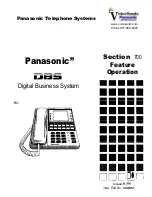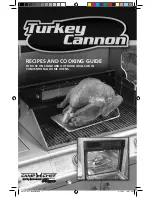
DIVERSIFIED METAL FABRICATORS, INC.
RW-1016
4-14
© 2017 DMF, Inc. All Rights Reserved.
4.6
RAIL WHEEL LOADS
4.6.1
General Information
NOTE:
DMF Recommends the weight adjustment procedure be done AFTER the hydraulic and
electrical systems have been installed. A fully functional hydraulic system will make it
possible to repeatedly lift and lower the Railgear to check and verify adjustments.
Rail wheel load is the amount of weight carried by each rail wheel while on rail. Too little rail
wheel load can lead to derailment. Too much rail wheel load can cause premature wear or
failure of the Railgear components. It will also reduce traction and decrease braking
performance. Proper adjustment of rail wheel loads will ensure that the completed vehicle
operates safely, and offers good ride quality and component life. RW-1016 Railgear features an
independent suspension system at all 4 wheels. The rail wheel loads at each corner can be
independently adjusted.
NEVER OPERATE A VEHICLE ON RAIL WITH RAIL WHEEL LOADS OUTSIDE
OF THE LIMITS AS DESCRIBED IN TABLE 4.6.3.
CHECK FOR PROPER TIRE INFLATION BEFORE ADJUSTING RAIL WHEEL
LOADS OR OPERATING VEHICLE ON RAIL.
ADDING OR REMOVING EQUIPMENT WILL CHANGE RAIL WHEEL LOADS.
ALWAYS CHECK RAIL WHEEL LOADS BEFORE OPERATING THE VEHICLE
ON RAIL.
4.6.2
When to check Rail Wheel Load
Initial installation.
Once per year, or more frequently as conditions dictate.
If you have changed the empty weight of your truck by adding or subtracting
fixed equipment or tools.
If you suspect low rail wheel load.
If you are experiencing premature tread wear.
If the Railgear fails to deploy fully due to overloading.
If poor traction or braking performance on rail is experienced.
4.6.3
Target Rail Wheel Loads
Rail wheel loads should be set with the vehicle in an operational configuration. If rail wheel
loads are set on a bare truck, and later equipment is added, rail wheel loads may exceed
allowable limits. Likewise, if rail wheel weights are set for a heavily loaded truck, and
equipment is later removed, the rail wheel weights may fall below allowable limits.
Rail wheel loads should be maintained at the target rail wheel loads listed in Table 4.6.3.
Minimum and maximum values are given as limits on individual rail wheel loads when the
vehicle is carrying a non-fixed payload, and are not ranges within which to set rail wheel loads
on an empty vehicle.
RAIL WHEEL LOADS MUST REMAIN WITHIN 50lbs LEFT-TO-RIGHT ON AN AXLE.
UNEVEN RAIL WHEEL LOADING CAN CAUSE DERAILMENT.
Min. rail wheel
load (each, lbs.)
Target rail wheel
load (each, lbs.)
Max. rail wheel
load (each, lbs.)
Front Railgear
500
625±25
1,000
Rear Railgear
500
525±25
1,000
Table 4.6.3
Target rail wheel loads
Summary of Contents for RW-1016
Page 22: ......
Page 30: ......
Page 46: ......
Page 47: ......
Page 48: ......
Page 54: ......
Page 55: ......
Page 56: ......
Page 59: ......
Page 60: ......
Page 97: ...2017 DMF Inc All Rights Reserved Page 4 of 4 Page left intentionally blank...
Page 102: ...2017 DMF Inc All Rights Reserved Page 5 of 5 Page left intentionally blank...
Page 107: ...2017 DMF Inc All Rights Reserved Page 5 of 5 Page left intentionally blank...
Page 110: ...DIVERSIFIED METAL FABRICATORS INC RW 1016 2017 DMF Inc All Rights Reserved...
















































